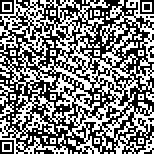| 摘要: |
| [摘要] 目的 探讨使用质子泵抑制剂治疗稳定期痛风合并上消化道出血患者对痛风急性发作影响的可能原因及发生机制。方法 选择稳定期痛风合并上消化道出血患者20例作为观察组,以同期住院既往无痛风病史的高尿酸血症合并上消化道出血患者20例作为对照组,比较两组患者使用质子泵抑制剂治疗前后尿pH值、血尿酸及电解质水平,以及治疗后痛风发作情况。结果 治疗期间观察组20例均出现痛风急性发作,使用质子泵抑制剂至临床出现痛风性关节炎急性发作时间在1~8(3.95±1.79)d,表现为发热、关节不同程度红肿、疼痛及功能活动障碍。对照组均未出现上述临床症状。治疗后两组患者血尿酸水平均较治疗前升高,血清K+与Ca2+较治疗前降低,血清Cl-较治疗前升高,差异均具有统计学意义(P<0.05);治疗后两组患者Na+无明显变化(P>0.05)。结论 质子泵抑制剂可能在一定程度上对肾小管H+-K+-ATP酶产生抑制作用或损伤肾小管功能,进而促使痛风复发或加重。 |
| 关键词: 质子泵抑制剂 上消化道出血 痛风性关节炎 |
| DOI:10.3969/j.issn.1674-3806.2019.10.10 |
| 分类号:R 589.7 |
| 基金项目:广西消化疾病临床医学研究中心建设项目(编号:桂科AD17129027) |
|
| Effects of proton pump inhibitors on acute gout attack in patients with stable gout and upper gastrointestinal hemorrhage |
|
LI Yu-ling, NONG Bing, HUANG Zong-sheng, et al.
|
|
Department of Gastroenterology, the People′s Hospital of Guangxi Zhuang Autonomous Region, Nanning 530021, China
|
| Abstract: |
| [Abstract] Objective To explore the possible causes and mechanism of proton pump inhibitors(PPIs) in treatment of gout attack in patients with stable gout and upper gastrointestinal hemorrhage. Methods Twenty patients with stable gout and upper gastrointestinal hemorrhage were selected as the observation group and 20 patients with hyperuricemia and upper gastrointestinal hemorrhage who had no history of gout in the same period were selected as the control group. The urinary pH values, blood uric acid and electrolytes before and after PPIs treatment, and gout attacks after treatment were compared between the two groups. Results During the treatment period, 20 patients in the observation group had acute episodes of gout. The time from using PPIs to clinical onset of acute gouty arthritis was 1 to 8 days, with an average of (3.95±1.79)days. The manifestations were fever, redness and swelling of joints, and pain and dysfunction of joints in some degree, but these symptoms did not appear in the control group. The blood uric acid levels were significantly increased after treatment compared with those before treatment in the two groups respectively(P<0.05). The levels of serum K+ and Ca2+ in the two groups were significantly lower after treatment than those before treatment(P<0.05). The levels of serum Cl- in the two groups were significantly increased after treatment compared with those before treatment(P<0.05). There were no significant differences in the levels of Na+ in the two groups after treatment compared with those before treatment(P>0.05). Conclusion PPIs may inhibit the renal tubular H+-K+-ATPase to some extent or impair the function of renal tubules, which may cause recurrence or aggravation of gout. |
| Key words: Proton pump inhibitors(PPIs) Upper gastrointestinal hemorrhage Acute gouty arthritis |

